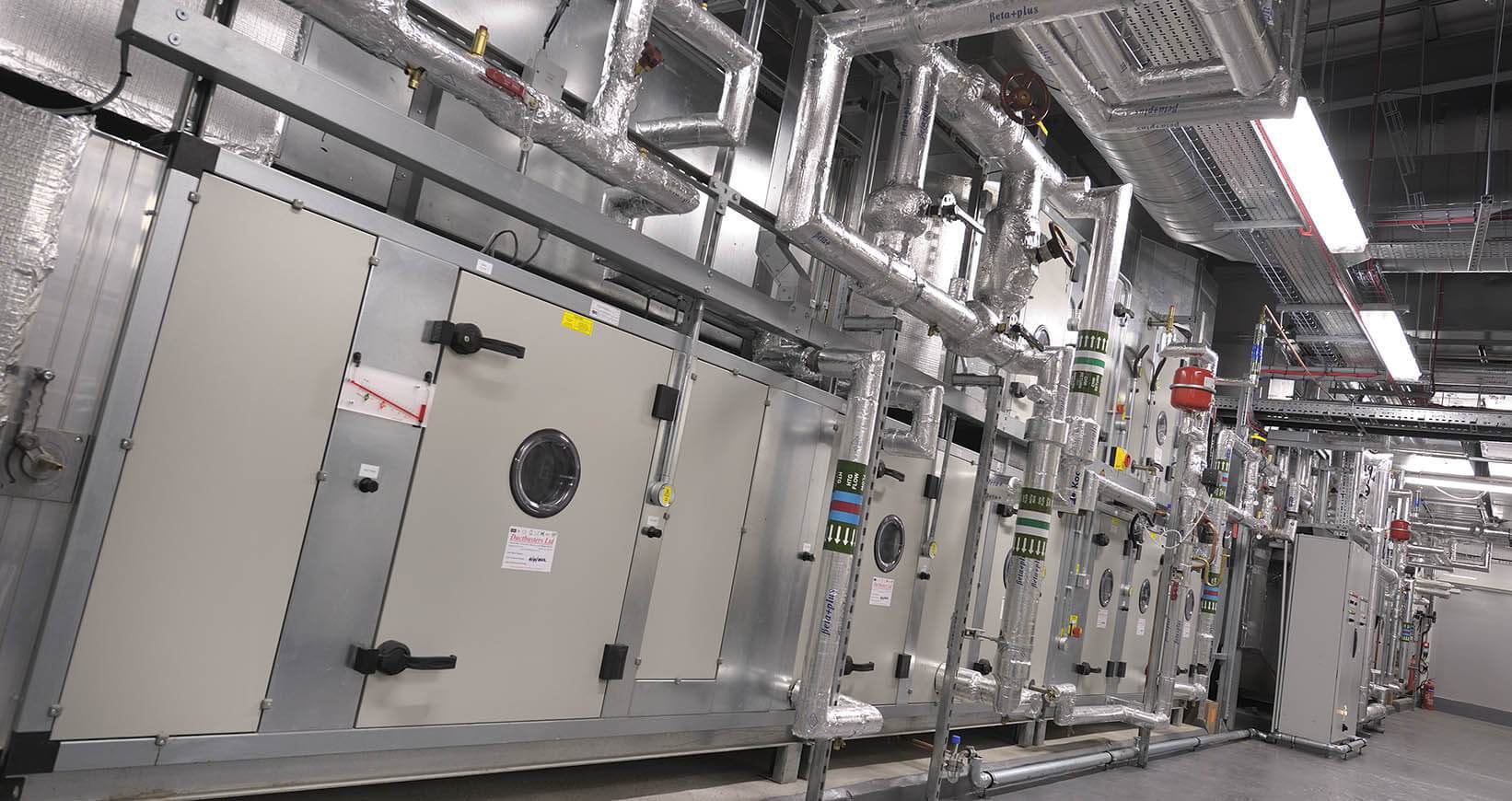Creating an asset register for construction projects
[edit] Introduction
This article examines the significance of producing an accurate asset register as part of the operations and maintenance (O&M) information to be handed over from the main contractor to the end client, as part of the practical completion handover documentation.
[edit] Digital processes
The UK construction industry is progressively adopting digital processes that require structured information throughout the life of the project. The end client’s facilities management (FM) team are increasingly informing the decision as to the nature of the digital data to be provided at handover. For most FM teams, receiving a structured information set answering the key questions, What is it? Where is it? What do we need to do? remains the holy grail, rarely achieved in a standard set of everyday O&Ms.
[edit] What is an asset register?
The term asset register originates from the accountancy profession and was a mechanism by which an organisation’s finance department could maintain a record of what assets an organisation possessed and what was their value.
An asset was often simply defined by the value of the item, rather than its specific nature or usage. As financial systems evolved, assets were no longer required to be physical items, and could also be intangible in nature, such as goodwill, IP, titles and rights.
Within the construction industry, an asset register is more closely aligned to the traditional itemised list of a building’s elements and components. However, the FM sector needs further information related to on-going inspection, maintenance, cleaning and replacement activities.
Most assets are associated with building services installations, such as an item of the plant or machinery or a system of connected equipment. The FM team manages the whole lifecycle of an asset from purchase through usage and ongoing maintenance through to disposal and replacement.
Therefore, the completeness of an asset register is determined by two dimensions - the scale of the equipment and components to be included, and the range of information to be obtained about each piece of equipment. A useful template example is located within CIBSE’s DE5: Asset Information Requirements.
[edit] What goes into an asset register?
The definition should be provided by the end client and/or their advisors and be informed by the requirements of the information’s end users. To achieve this, the client team must understand how the finished building will be managed and which, if any, computer aided facilities management (CAFM) software is going to be used.
In the above scenario, the client team should be advising the main contractor and the supply chain based on the CAFM system requirements. They should next provide a data schema for the specific data to be captured for each asset. This is an example of “bespoke” structured data and will vary from CAFM system to CAFM system.
It is often the case that the on-going building operation and management is not understood at the time of construction. In these circumstances, the PAS1192 guidance around BIM provides a more generic solution to what asset data will be provided.
The current UK BIM framework for the delivery of structured data provides guidelines for delivery of the asset information requirements based on the generic COBie standard. This approach offers a construction industry standard as to what elements should be included in the asset register and the data that should be provided for each asset.
Regardless of approach all asset data, will likely include some of the below items:
- Asset number or ID.
- Asset description.
- Manufacturer details.
- Manufacturer model/part number.
- System code.
- Equipment location.
- Warranty end date.
- Spares information.
- Maintenance tasks and frequency.
[edit] Why is an asset register produced?
The ongoing operating and maintenance costs of an asset over its lifecycle far outweigh the initial cost of purchase. Therefore, good asset management can significantly reduce expenditure and extend the life of a building’s assets.
Production of the asset register will facilitate several other immediate benefits to the building owners and managers:
- Directly saves end client costs associated with surveying newly handed over buildings.
- Facilitates early provision of maintenance contracts.
- Provides a record for insurance purposes of the building’s assets.
- Enables the planned maintenance programme.
- Simplifies maintenance processes.
- Provides forward visibility of maintenance tasks and the required resources to complete them.
[edit] When should an asset register be produced?
The production of an asset register is an incremental approach undertaken through the life of a construction project with information progressively delivered against the asset information requirements (AIR) where provided. Where there is no specific client guidance, this is defined in the UK BIM Framework, but broadly aligns with stages in the Digital Plan of Works.
In the design phase, it should be possible to identify all the intended assets (from their geometric objects), their location, their ID and some performance characteristics. In the construction phase, it should be possible to add in some of the 'as installed' data such as manufacturer, model or part number and warranty ends dates. Prior to handover, commissioning data and final tagging/bar code data can be added.
This proactive approach allows the construction supply chain to provide information when it is at its most readily available. Contrast this to the approach where building owners can incur significant additional costs from FM providers charging to undertake a building survey to identify the items they may have to maintain.
[edit] Who should produce an asset register?
The responsibility to produce an asset register should sit within the scope of the main contractor’s agreed handover deliverables managed against the employer's information requirements (EIR) or agreed BIM execution plan (BEP). The MEP contractors will be responsible for a significant portion of the information to be provided. This may be outsourced to the organisation managing the other handover deliverables.
[edit] Key takeaways
- Production of an asset register should be included as a standard handover requirement between the main contractor and end client.
- Producing the asset register in the construction phase provides early visibility to the end client of future maintenance requirements.
- If delivered during the construction phase, the asset register may save the end client money.
[edit] Related articles on Designing Buildings Wiki
- Asset information model
- Asset information requirements.
- Asset management.
- Asset register for built assets.
- BIM and facilities management.
- BIM.
- Computer aided facilities management.
- Construction Operations Building Information Exchange (COBie).
- Facilities management.
- Handover and close out.
[edit] External resources
Featured articles and news
One of the most impressive Victorian architects. Book review.
RTPI leader to become new CIOB Chief Executive Officer
Dr Victoria Hills MRTPI, FICE to take over after Caroline Gumble’s departure.
Social and affordable housing, a long term plan for delivery
The “Delivering a Decade of Renewal for Social and Affordable Housing” strategy sets out future path.
A change to adoptive architecture
Effects of global weather warming on architectural detailing, material choice and human interaction.
The proposed publicly owned and backed subsidiary of Homes England, to facilitate new homes.
How big is the problem and what can we do to mitigate the effects?
Overheating guidance and tools for building designers
A number of cool guides to help with the heat.
The UK's Modern Industrial Strategy: A 10 year plan
Previous consultation criticism, current key elements and general support with some persisting reservations.
Building Safety Regulator reforms
New roles, new staff and a new fast track service pave the way for a single construction regulator.
Architectural Technologist CPDs and Communications
CIAT CPD… and how you can do it!
Cooling centres and cool spaces
Managing extreme heat in cities by directing the public to places for heat stress relief and water sources.
Winter gardens: A brief history and warm variations
Extending the season with glass in different forms and terms.
Restoring Great Yarmouth's Winter Gardens
Transforming one of the least sustainable constructions imaginable.
Construction Skills Mission Board launch sector drive
Newly formed government and industry collaboration set strategy for recruiting an additional 100,000 construction workers a year.
New Architects Code comes into effect in September 2025
ARB Architects Code of Conduct and Practice available with ongoing consultation regarding guidance.
Welsh Skills Body (Medr) launches ambitious plan
The new skills body brings together funding and regulation of tertiary education and research for the devolved nation.
Paul Gandy FCIOB announced as next CIOB President
Former Tilbury Douglas CEO takes helm.
























